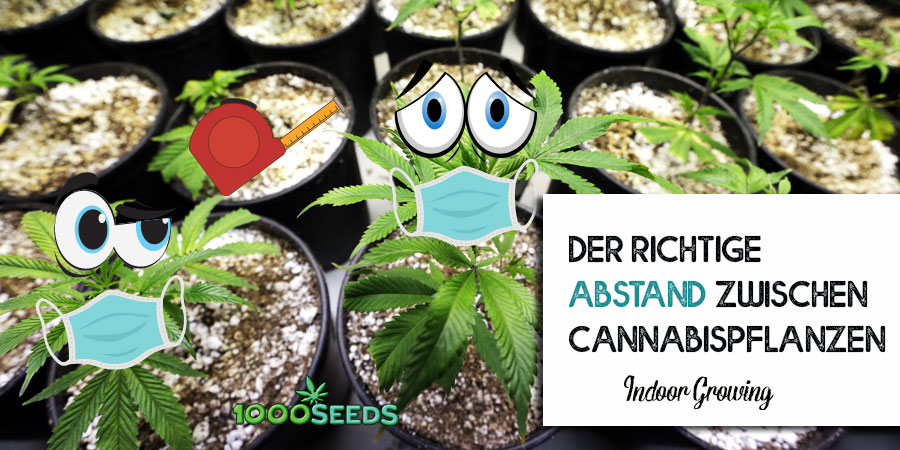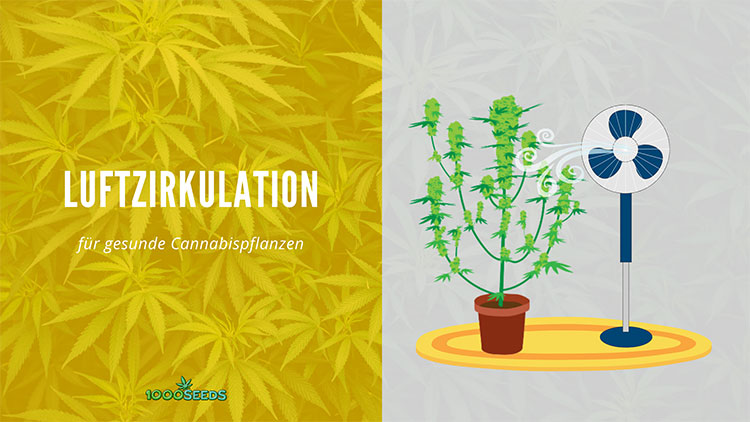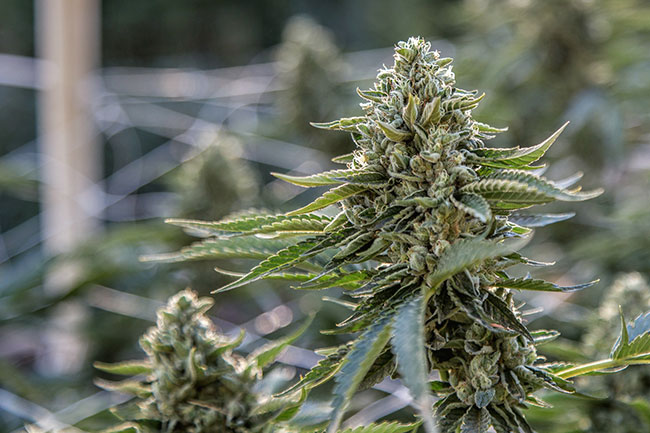The right distance between cannabis plants

What is the right distance between cannabis plants in the grow room?
Cannabis plants also need to be spaced a certain distance apart to develop healthily. The question arises, how should the plants be best positioned in the grow room and how many of them? And indeed, this is an important question, because plant spacing is a key factor for a successful grow. We will go into this topic in more detail below:
First of all, it depends on how big the growing area is and how much space is available. Depending on the cannabis variety being grown, the space required per plant can vary between 0.3 m² and 1m². Of course, there are also decisive factors such as the plant pots, the lighting and the ventilation. But more about that later.
Plants should always have enough distance to the neighbouring plants so that there are no further problems. An overcrowded grow cabinet is detrimental to the plants and their development. As the leaves and branches of the cannabis plants grow into and over each other, they become more humid and lose the ability to transpire efficiently. As a result, mould growth and pest infestation by e.g. thrips or spider mites is favoured. This problem is exacerbated if there is insufficient temperature and humidity regulation and poor ventilation.
It is best to leave a space of at least 10 cm between the plants. This way the plants can develop undisturbed.
Plant pots and plant size
Normally, the larger the plant pot, the larger the plants will grow. In the beginning, when the plants are still small seedlings, a small pot with 0.25-0.5 L is sufficient. Later, when they grow and gain height, the variety determines the pot size: depending on whether a bushy and low-growing Indica is grown or a long Sativa.
- Square pots help to save space
If you want to grow plants that are only about 80 cm high, you need pots with a volume of about 3.7 litres. If the plants are to grow taller, we recommend using pots with a volume of 8-18 litres.
The light and the plant size
The lighting should be designed so that as much light as possible falls on all parts of the plants. This requires a high-quality reflector that ensures an even distribution of light. In addition, the walls of the grow room or grow tent should be made of or covered with a highly reflective film or coating. This way, the available light can be used optimally and a lot of energy can be saved at the same time.
Double-ended lamps can produce a third more light intensity than conventional NDL lamps. However, because of the high heat generated, these lamps must also be hung sufficiently high above the plant tips.
If a large part of the cannabis plants shade each other, this will also (negatively) influence the development of the plants. As a result, there will be fewer trichomes and fewer large flowers. The growth of the plants will be slowed down and diseases will occur more easily. If you notice that your plants are shading each other, it is time to move them further apart.
Air circulation and ventilation

Every grow room needs at least one oscillating fan, depending on the size. All parts of the plants should be covered by a light air flow. Stagnant air can have a negative effect on the plants and make the leaves too moist. If some parts of the grow room do not have sufficient airflow, you should place the plants further apart and install a second (third, fourth....) fan if necessary.
A sufficiently dimensioned fan constantly transports the stale air and humidity out of the grow room. For healthy and strong growth, a fan is indispensable for indoor cultivation.
Every plant is unique
After all, every cannabis plant and every strain is unique in terms of shape, height, needs, space and dimensions. In any case, ensure a good result by making sure that the plants do not touch each other. Adapt the spacing several times during cultivation to keep your plants healthy and happy.
Plant spacing with the Scrog method

The use of scrog and trellis nets has become very popular and, like the Sea-Of-Green method, is used by many growers. With these methods, it can sometimes be difficult to ensure sufficient spacing between cannabis plants. The netting and an overall crowded growing space compresses the branches of the plants and creates optimal conditions for pests and pathogens to spread.
At the same time, the scrog net can also be used to keep branches and leaves apart and to move the plants in the desired direction. It can help to ensure that plants do not grow too densely and that light and air can reach all parts of the plant. With the scrog method, it is always advisable to use a second oscillating fan in the floor area (per 1 m²) so that sufficient aeration is ensured.
Leaves at the bottom of the plants that receive little or hardly any light and reduce air circulation should be removed in any case. In our article Lollypopping you will learn how to do this exactly and in which phase.
- Regardless of the cultivation method, it is advantageous to keep the humidity at 50-56% if possible.
- Check the plants regularly and cut off or tie back branches that overlap so that the plants no longer touch each other.
A good tip:
It is advisable to have larger plants and fewer of them. Each plant should have enough space so that it is completely supplied with light. An exact formula for the number of pots in a correspondingly large growing space is difficult to give and remains very general. It depends, among other things, on the quality and intensity of the light. It is very likely that more plants can be placed under a 600W double-ended lamp than under an ordinary NDL lamp with 600W. The same applies to LED lamps, where the performance, the light spectrum and the quality of the individual components and chips are very important.
These factors determine how many plants you can place under a 600W NDL or a comparable LED:
- Reflector type
- Planter size
- The cannabis variety and growth characteristics of the plants
- Are the plants pruned?
- Control of growing conditions (temperature, air circulation, humidity, air exchange)





